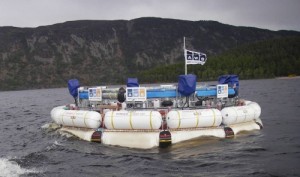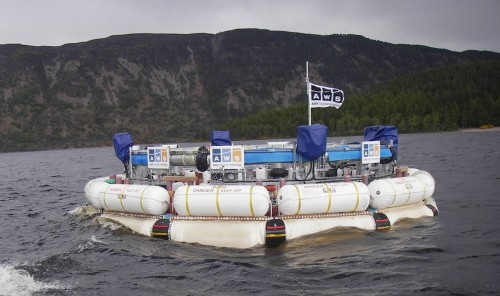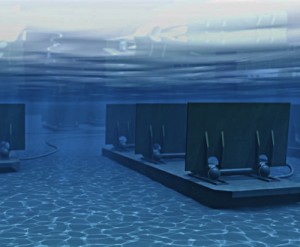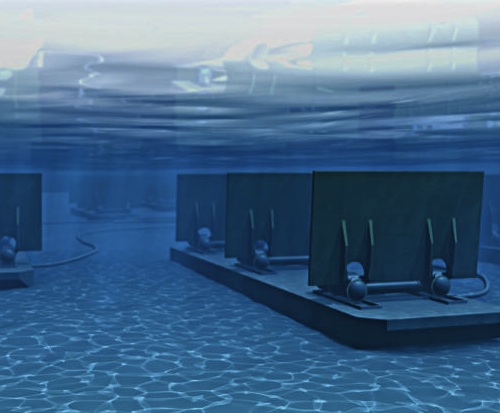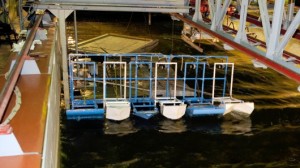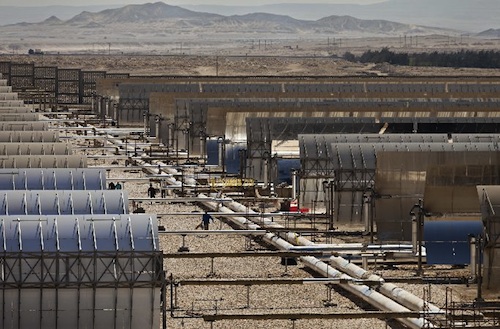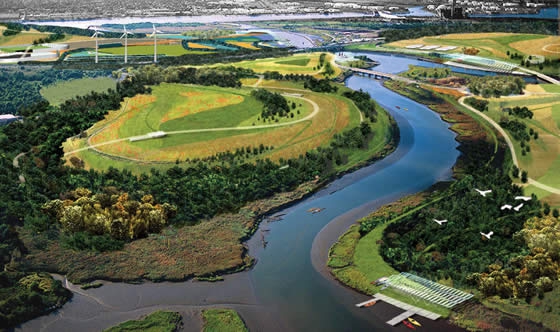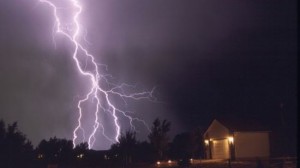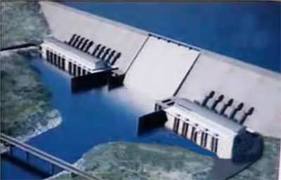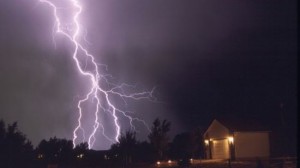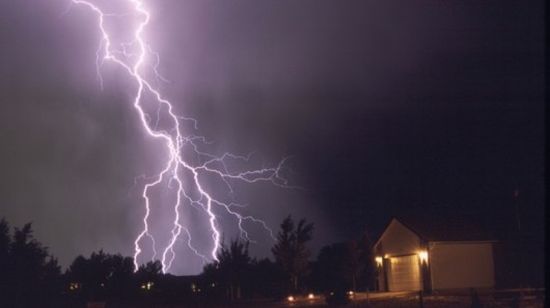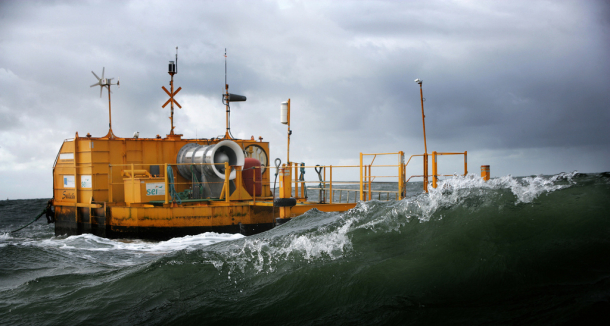A relatively new* type of reciprocating wave-powered electricity generator called Searaser has been developed and is moving forward. Searaser, acquired by Ecotricity, is not a typical wave power plant.
The first peculiarity is that it does not generate electricity out at sea. Due to the fact that waves move up and down in the ocean, they can continuously move a float attached to a reciprocating pump that can pump water through a water-powered onshore electricity generator for the sake of keeping the electrical parts of the system out of the water.
As Damian Carrington of The Guardian notes, its is a bit like an aquatic “bicycle pump.”
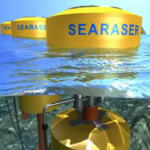
 Follow
Follow